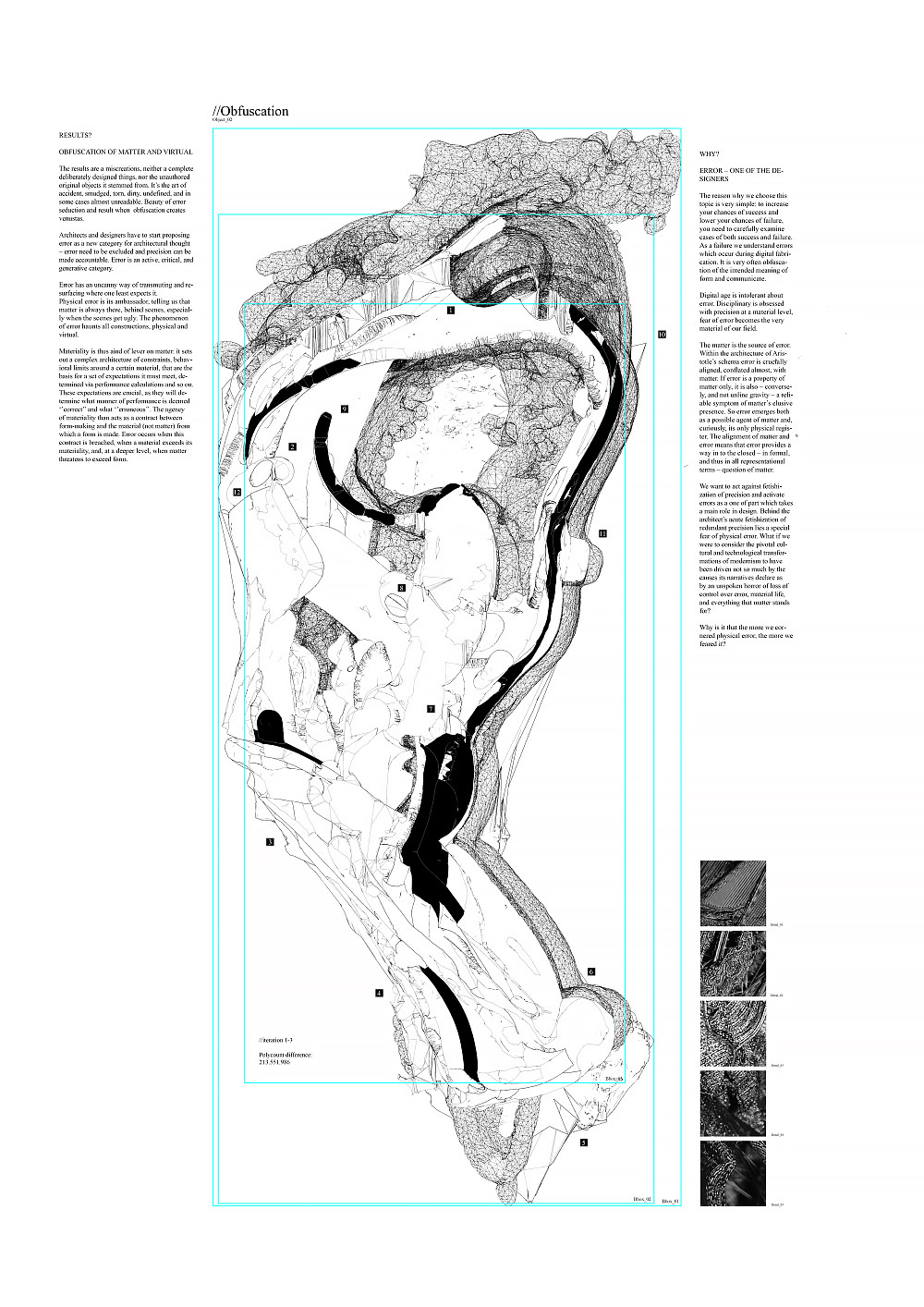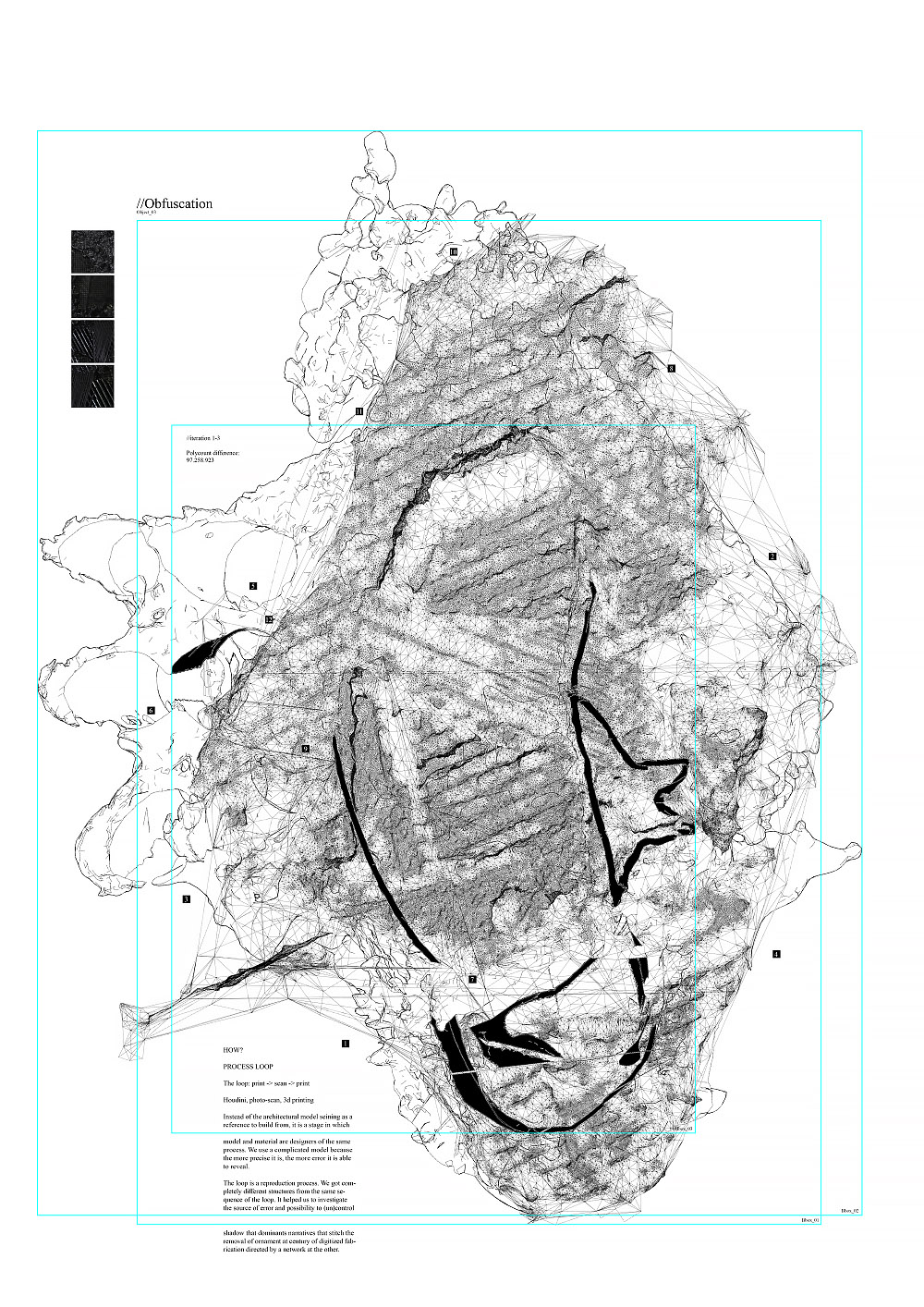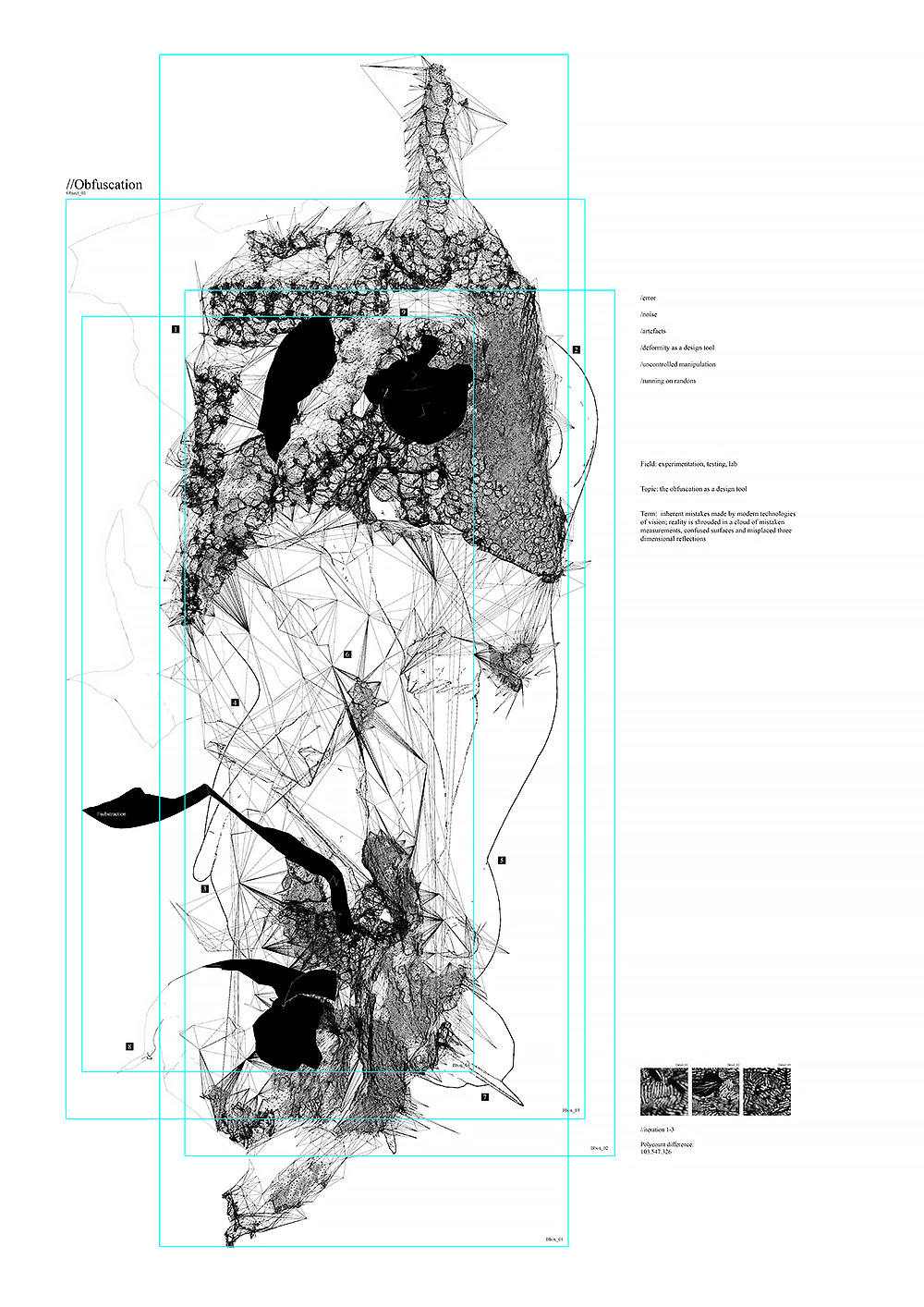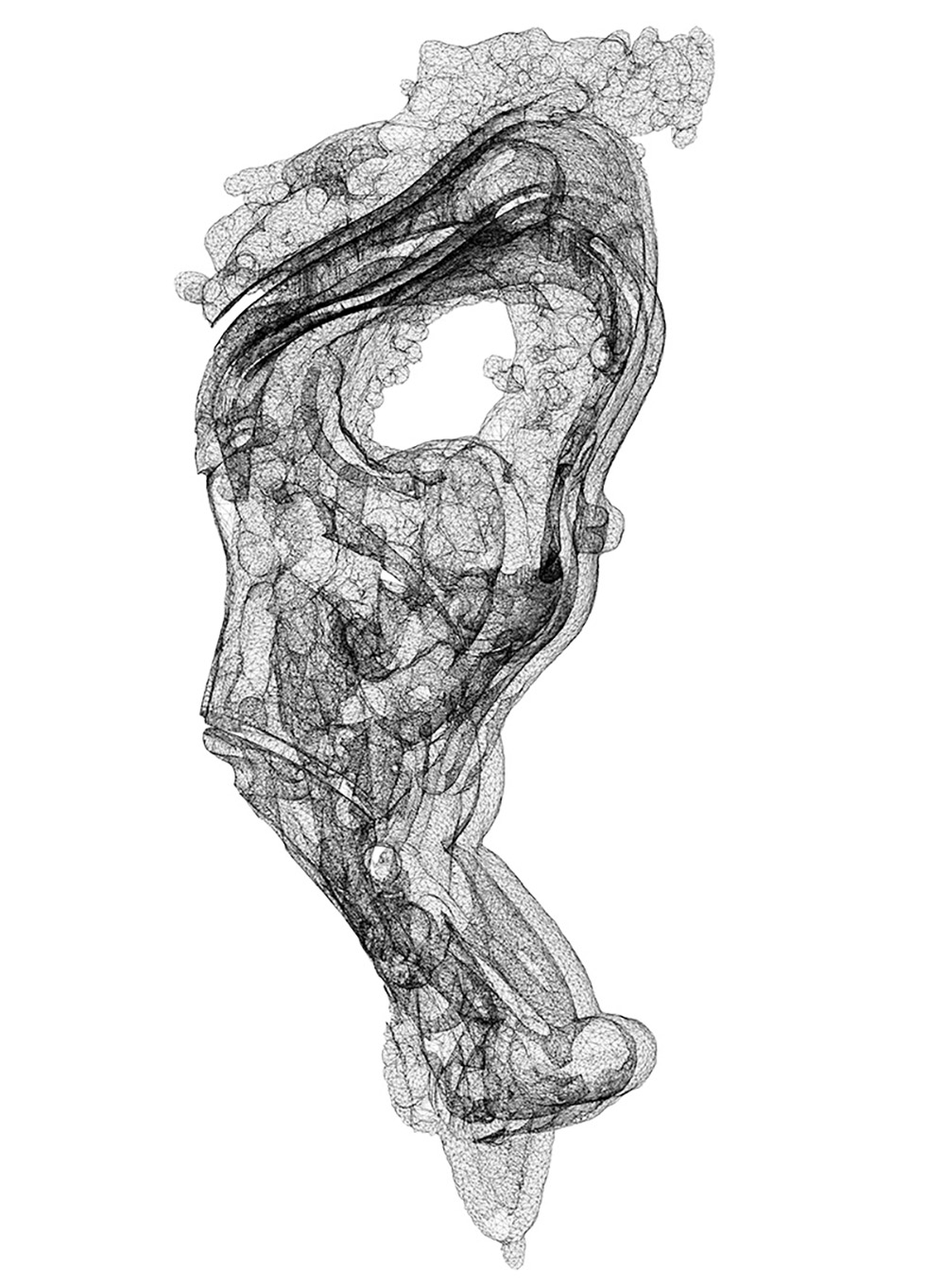Material Obfuscation (⨀)
Material Obfuscation. Obfuscation is the process in software development
of making the source code hard to interpret for a human reader, while
remaining executable for a computer. This experiment11 looked into the
allographic qualities introduced by photogrammetry and 3D scanning on
the one hand and a d.i.y. filament printer on the other. Through various
iterations of modelling, printing, scanning and repeating that process,
the accumulative particular qualities or errors of both these technologies
become amplified. The feedback loop accelerates the question of authorship,
allowing the algorithms, the machinic fabrication processes and the material
to actively contribute to the resulting fabricated artefact. The final iteration
shows traces of the code, the triangulation introduced by photogrammetry,
the layered and linear qualities of the slicing algorithm that controls the
motion of the 3D printer, as well as material properties and limits.
Since the algorithms are highly attuned to the fabrication and material
nature of the 3D printed artefacts, their 2D counterparts can be seen as representational: they represent a material reality outside themselves, but the
way they refer to this materiality is not symbolic, but rather an enactment
of the same movements that can be made by a different machine to produce
material artefacts. When drawing an architectural section, line-weights
and hatches are used as a symbolic notation of materiality: the thicker the
line, the denser the material. The hatches in the Hatching with Matter drawings might be reminiscent of hatches in architectural drawings, but they
operate in a non-symbolic manner. As such, these drawings also acquire
an experiential quality, and become non-representational. The nature of
the drawing is altered through digital fabrication: The drawing loses its
projective connotations and becomes an unfolded trace for the fabrication
process of cutting or adding material.
Thanks to my instructor Corneel Cannaerts.











project collaborators: Jari Jacquet, Olaf Mitka
project year: 2017